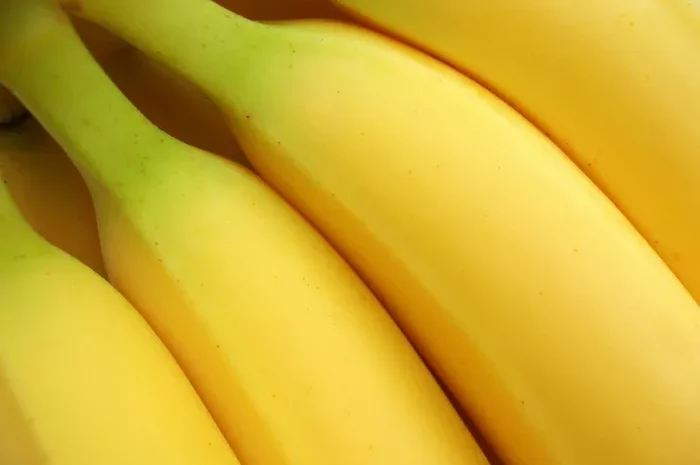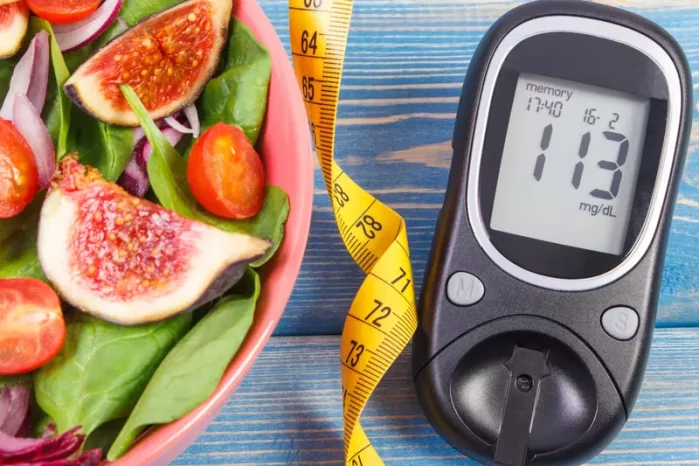Managing a diabetic diet can be a delicate balance, particularly when kidney disease is also present. Both conditions require special attention to diet, but the combination of diabetes and kidney disease poses unique challenges. The kidneys play an essential role in filtering waste from the bloodstream, and when they are compromised, as is the case in chronic kidney disease (CKD), the body’s ability to process nutrients and eliminate waste is impaired. In individuals with diabetes, the kidneys are at an increased risk due to the effect of high blood sugar on kidney function.
A carefully planned breakfast is essential for people with both diabetes and kidney disease, as it can help manage blood sugar levels while also alleviating the burden on the kidneys. This article explores the dietary considerations and provides practical advice on what should be included in a diabetic kidney-friendly breakfast.
Understanding the Connection Between Diabetes and Kidney Disease
Diabetes is one of the leading causes of chronic kidney disease. High blood glucose levels over time damage the blood vessels in the kidneys, making them less effective at filtering waste. This can lead to diabetic nephropathy, a type of kidney disease that results in the gradual loss of kidney function. People with diabetic nephropathy often experience proteinuria (protein in the urine), a key marker of kidney damage.
When a person with diabetes also has kidney disease, their diet must address both conditions. For kidney disease, the focus is on controlling the intake of sodium, potassium, phosphorus, and protein. For diabetes, managing carbohydrate intake to regulate blood sugar levels is essential.
The Role of Breakfast for Diabetics with Kidney Disease
Breakfast serves as a crucial first meal of the day, and it plays an important role in regulating blood sugar levels. It is also an opportunity to ensure that the body receives essential nutrients without putting strain on the kidneys. The key to a suitable breakfast for someone with diabetes and kidney disease is balance. A balanced meal can support energy levels, prevent spikes in blood glucose, and prevent the kidneys from becoming overburdened.
For individuals with kidney disease, the kidneys struggle to process large amounts of waste produced by the body. This means that excessive protein and certain minerals (such as potassium, phosphorus, and sodium) must be monitored closely. In the case of diabetes, managing the intake of carbohydrates is paramount to prevent dangerous fluctuations in blood sugar.
Key Dietary Considerations
1. Carbohydrates: Choose Low-Glycemic Options
Managing blood sugar levels is the priority for any diabetic meal. Carbohydrates have the most direct impact on blood glucose levels, so it’s important to choose foods that are low in glycemic index (GI). Low-GI foods release glucose more slowly into the bloodstream, preventing blood sugar spikes.
Ideal Choices:
Whole grains: Oats, quinoa, and whole wheat toast are better choices than refined grains.
Non-starchy vegetables: Leafy greens, cucumbers, and peppers are low in carbs and high in fiber.
Berries: Blueberries, strawberries, and raspberries are low-GI fruits that provide antioxidants without spiking blood sugar.
2. Protein: Moderation is Key
Excessive protein intake can put strain on kidneys, which are already struggling to filter waste. People with kidney disease need to moderate their protein consumption. However, protein is still a necessary part of a balanced diet, especially for those with diabetes, as it helps with blood sugar regulation and muscle maintenance.
Ideal Choices:
Lean meats and fish: Chicken breast, turkey, and fish such as salmon are good sources of protein that are lower in fat.
Plant-based proteins: Tofu, lentils, and chickpeas offer plant-based proteins that may be easier on the kidneys.
3. Sodium: Reduce Intake to Protect Kidney Function
For kidney disease patients, sodium is a mineral that should be limited to avoid fluid retention and high blood pressure. High sodium intake can worsen kidney disease and contribute to cardiovascular issues, both of which are common in diabetic patients.
Ideal Choices:
Herbs and spices: Fresh herbs like basil, cilantro, or parsley can enhance flavor without adding sodium.
Fresh or frozen vegetables: Avoid canned vegetables, which often contain added sodium.
4. Potassium: Monitor Levels
Potassium is a vital mineral that helps regulate fluid balance and muscle function, but when kidney function declines, the kidneys become less efficient at removing excess potassium. In advanced stages of kidney disease, potassium levels can rise dangerously, causing heart arrhythmias.
Ideal Choices:
Low-potassium fruits and vegetables: Apples, pears, berries, carrots, and cucumbers are excellent options.
Avoid high-potassium foods: Limit high-potassium foods such as bananas, potatoes, tomatoes, and spinach.
5. Phosphorus: Limit Intake
Phosphorus is another mineral that the kidneys filter out. In kidney disease, the kidneys may struggle to eliminate phosphorus from the bloodstream, leading to bone health problems and vascular calcification. High-phosphorus foods should be limited in the diet.
Ideal Choices:
Non-dairy alternatives: Almond milk or coconut milk is a good alternative to dairy for people with kidney disease.
Limit processed foods: Processed meats, cheeses, and nuts can be high in phosphorus.
Breakfast Ideas for Diabetics with Kidney Disease
Now that we’ve established the key dietary considerations, let’s look at some practical breakfast ideas that balance both the needs of managing diabetes and kidney disease. These meals focus on whole, unprocessed ingredients and are mindful of blood sugar regulation, kidney function, and overall health.
1. Oatmeal with Berries and Flaxseeds
Oatmeal is an excellent choice for breakfast due to its fiber content and low glycemic index. It helps regulate blood sugar levels and provides a sustained release of energy. Berries, such as strawberries or blueberries, are low-GI and provide antioxidants. Flaxseeds offer a good source of omega-3 fatty acids, which are beneficial for heart health, a concern for those with diabetes and kidney disease.
Recipe:
-
1/2 cup rolled oats
-
1 cup water or unsweetened almond milk
-
1/4 cup mixed berries (fresh or frozen)
-
1 tablespoon ground flaxseeds
-
A dash of cinnamon for added flavor
2. Veggie Scramble with Tofu
A plant-based tofu scramble can be a nutritious, kidney-friendly breakfast. Tofu provides protein without being too taxing on the kidneys, and non-starchy vegetables like spinach, peppers, and mushrooms add fiber and essential vitamins. This breakfast is low in sodium, low in potassium (when you choose the right vegetables), and can be flavored with herbs and spices to enhance the taste.
Recipe:
-
1/2 block of firm tofu, crumbled
-
1/4 cup diced bell peppers
-
1/4 cup chopped spinach
-
1/4 cup mushrooms, sliced
-
Fresh herbs like parsley or basil
-
Olive oil for cooking
3. Whole Wheat Toast with Avocado and Tomato
This simple breakfast provides whole grains, healthy fats from avocado, and antioxidants from tomatoes. The low-GI whole wheat bread helps regulate blood sugar levels, while the healthy fats in avocado are essential for heart health. Tomatoes are rich in vitamins and low in potassium compared to other fruits and vegetables.
Recipe:
-
1 slice of whole wheat toast
-
1/4 avocado, mashed
-
2-3 slices of tomato
-
A sprinkle of black pepper and olive oil for flavor
4. Chia Pudding with Almond Milk and Berries
Chia seeds are a great source of omega-3 fatty acids and fiber, and they have a minimal impact on blood sugar. When mixed with almond milk, they create a creamy, satisfying breakfast that is gentle on the kidneys. Add a handful of berries for flavor and additional antioxidants. This breakfast is ideal for people who need something quick and easy to prepare.
Recipe:
-
2 tablespoons chia seeds
-
1/2 cup unsweetened almond milk
-
1/4 cup mixed berries
-
A sprinkle of cinnamon or vanilla extract
5. Cottage Cheese with Cucumber and Olive Oil
Low-fat cottage cheese can be a good source of protein for those with kidney disease, as long as it’s consumed in moderation. Pairing it with cucumber provides hydration and additional fiber, while olive oil adds healthy fats. This is a simple and refreshing breakfast that won’t overwhelm the kidneys.
Recipe:
-
1/2 cup low-fat cottage cheese
-
1/2 cucumber, sliced
-
A drizzle of olive oil
-
Fresh herbs like dill or parsley for garnish
Final Thoughts
When dealing with both diabetes and kidney disease, portion control is crucial. Even healthy foods need to be eaten in appropriate amounts to avoid overburdening the kidneys and causing blood sugar imbalances. It’s also essential to monitor how your body responds to different foods and adjust accordingly.
Working closely with a healthcare professional, such as a dietitian, is highly recommended to create a personalized plan that considers your specific health needs. Regular monitoring of kidney function and blood glucose levels will help ensure that your diet remains in alignment with your health goals.
In conclusion, a diabetic breakfast for someone with kidney disease should prioritize whole grains, moderate protein, and minimal amounts of potassium, phosphorus, and sodium. By carefully choosing ingredients that support both kidney function and blood sugar regulation, individuals can enjoy a nutritious and satisfying start to their day without compromising their health.
Related topics:
What Are 6 Foods That Can Prevent Diabetes?



















